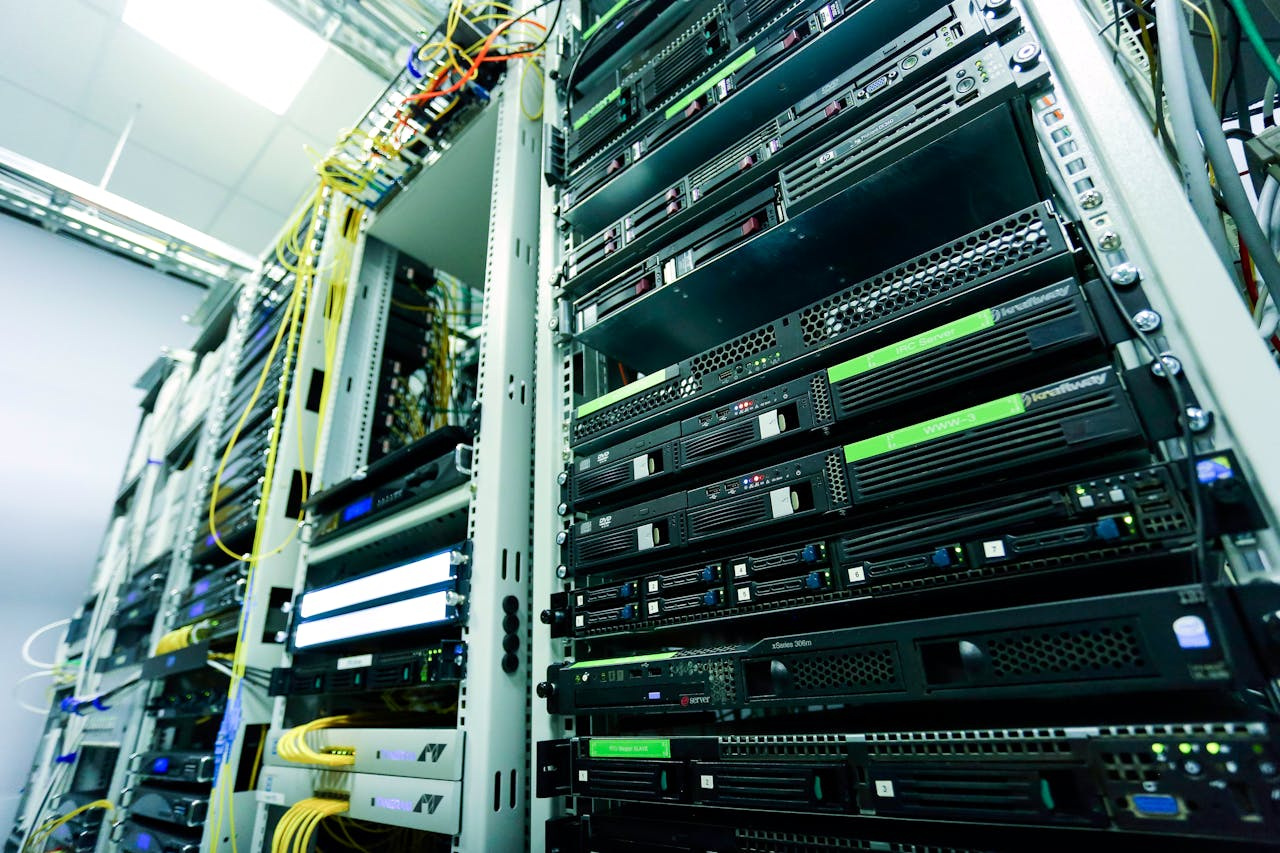Artificial Intelligence in Data Centre Operations
Artificial Intelligence in Data Centre Operations
Data
Data Centre Operations: Optimising Infrastructure for Performance and Reliability
News
Research reveals need for hybrid cloud storage strategies
Nasuni, an enterprise data platform for hybrid cloud environments, has unveiled the findings of its new industry research 2024 report, The Era of Hybrid Cloud Storage.
The research includes insights from over 1,000 IT purchasing decision-makers in the US, UK, and DACH (Germany, Austria, Switzerland) on hybrid cloud, digital transformation, security, and artificial intelligence (AI).
David Grant, President of Nasuni, comments, "As hybrid cloud storage takes centre stage, organisations need strategies to capitalise on their most valuable asset: data. In tandem, they need strategies for addressing critical IT issues including ransomware attacks and the introduction of AI integrations to the market. Legacy storage solutions cannot keep up with these demands. Nasuni’s The Era of Hybrid Cloud Storage report gives organisations the necessary industry and peer insights to understand and take action in a rapidly evolving cloud landscape.”
Key takeaways:
• Cloud strategies are at the forefront of enterprise success: Enterprises are rapidly moving forward with rolling out or planning cloud-first initiatives (according to 97% of respondents) to help grow their businesses, which includes significant investments in data management, analytics, AI, and cybersecurity.
• Hybrid cloud is business critical for proper data management: While only 19% of companies have a hybrid cloud storage model, a staggering 65% plan to implement one within the next year. Of those currently using a hybrid cloud solution, 70% plan to upgrade within the next 18 months.
• Data recovery and security is a primary driver for cloud solutions: Data recovery is the number one priority for firms when faced with a ransomware attack, with 59% of organisations seeing cloud initiatives delivering better data security and disaster recovery time.
• The growing role of data intelligence and AI: Organisations are targeting advanced data management and visibility through AI (60%). However, the biggest roadblocks preventing organisations from either developing or implementing AI solutions are data privacy and security (42%) and skills shortages (35%).
Nasuni enables global organisations to transform file data into an asset that can deliver critical business insights by consolidating that data in a secure and versatile enterprise hybrid cloud platform. Through its strategic partnerships and long-standing alliances with the major cloud providers, Microsoft Azure, AWS, and Google Cloud, the Nasuni File Data Platform is unlocking even greater efficiencies, reducing cost, and establishing a foundation for facilitating core enterprise AI use-cases.
Nasuni currently supports over 850 enterprise customers, including numerous Fortune 500, in more than 70 countries to scale, protect, and manage their data.
To download the full Era of Hybrid Cloud Storage report, click here.
For more from Nasuni, click here.
Simon Rowley - 17 July 2024
Artificial Intelligence in Data Centre Operations
Data
Data Centre Operations: Optimising Infrastructure for Performance and Reliability
News
Report explores the gap between AI ambition and maturity
Vultr, the world’s largest, privately-held cloud computing platform, has released a new industry report, The New Battleground: Unlocking the Power of AI Maturity with Multi-Model AI.
The new study reveals a clear correlation between an organisation’s AI maturity and its ability to achieve superior business outcomes, outpacing industry peers in revenue growth, market share, customer satisfaction, and operational efficiency.
Commissioned by Vultr and conducted by S&P Global Market Intelligence, the research surveyed over 1,000 IT and digital transformation decision-makers responsible for their organisation’s AI strategy across industries, including healthcare and life sciences, government/public sector, retail, manufacturing, financial services, and more. Of the respondents surveyed, almost three-quarters (72%) are at higher levels of maturity of AI use. The report also includes a qualitative perspective on AI use by enterprises of varying sizes through in-depth interviews with AI decision-makers and practitioners.
“As organisations worldwide capitalise on strategic investments in AI, we wanted to look at the state of AI maturity,” says Kevin Cochrane, CMO of Vultr’s parent company, Constant. “What we’ve found is that transformational organisations are winning the hearts, minds, and share of wallets while also improving their operating margins. AI maturity is the new competitive weapon, and businesses must invest now to accelerate AI models, training, and scaling in production.”The number of models actively used within an organisation is a reliable measure of its deployed AI capabilities and overall AI maturity. The data reveals that advanced AI adopters leverage a multitude of models simultaneously as part of a multi-model approach.
On average, the number of distinct AI models currently operational stands at 158 with projections suggesting this number will rise to 176 AI models within the next year. This growth highlights remarkable acceleration in AI adoption across industries, underscored by the 89% of organisations anticipating advanced AI utilisation within two years.
AI is poised to permeate throughout the enterprise with 80% adoption anticipated across all business functions within 24 months. This will include AI being embedded across all applications and business units.
As AI builds on its new foothold across businesses, there will be an immense impact on enterprise-wide performance. According to the report, those with transformational AI practices reported that they outperformed their peers at higher levels.
Specifically, 50% of transformational companies are performing "significantly better" against industry peers than those at operational levels, while a large majority of AI-driven organisations say they improved their 2022/2023 year-over-year performance in customer satisfaction (90%), revenue (91%), cost reduction/margin expansion (88%), risk (87%), marketing (89%), and market share (89%). Meanwhile, nearly half (40-45%) of organisations say AI is having a “major” impact on market share, revenue, customer satisfaction, marketing improvements, and cost and risk reduction.
“AI's transformative impact is undeniable - it's devouring industries and is becoming ubiquitous in every facet of business operations. This necessitates a new era of technology, underpinned by a composable stack and platform engineering to effectively scale these innovations,” Kevin notes.To fully harness AI’s potential, 88% of the enterprises surveyed intend to increase their AI spend in 2025, with 49% expecting moderate to significant increases.
Findings related to key infrastructure, partner, and implementation strategies include:
• For cloud-native applications, two-thirds of organisations are either custom-building their models or using open-source models to deliver functionality.• In 2025, the AI infrastructure stack will be hybrid cloud with 35% of inference taking place on-prem and 38% in the cloud/multi-cloud.• Thanks to the skills shortage, 47% of enterprises are leveraging a partner to help them with strategy and implementation, and deployment of AI at scale. Only 15% are leveraging hyperscalers such as AWS, GCP, or Azure.• Open, secure, and compliant are the top attributes of cloud platforms for scaling AI across the organisation, geographies, and to the edge.
“For years, the hyperscalers have dominated the infrastructure market, relying on scale, resources, and technological expertise, but that is all about to change,” Kevin adds. “Over the next decade, everything will be rebuilt with AI at the core, with organisations integrating the principles of cloud engineering into their operations. As a result, we will see the rise of AI specialists and independents as they empower organisations to do transformative work and gain a competitive edge.”As the race to AI heats up, it will not be without its share of obstacles. Budget limitations, building or obtaining AI algorithms, lack of skilled personnel, and data quality are among the top hurdles organisations say they must resolve to graduate to the next stage of AI maturity.
For those at a transformational level of maturity, governance (30%) becomes much more of an issue, while company culture is the larger issue for those still in the accelerating stage.
For more information, or to download a copy of the full report, click here.
For more from Vultr, click here.
Simon Rowley - 4 July 2024
Artificial Intelligence in Data Centre Operations
Data
Data Centre Operations: Optimising Infrastructure for Performance and Reliability
News
Sustainable Infrastructure: Building Resilient, Low-Carbon Projects
Google’s emissions soar 48% over five years due to AI
Google’s greenhouse gas emissions have soared 48% over the past five years, with its Artificial Intelligence (AI) products relying on energy-intensive data centres.
Google labelled "increases in data centre energy consumption and supply chain emissions" as the primary driver behind the rise, with total emissions reaching 14.3 million metric tons, according to its annual environmental report.
It is estimated that data centres contribute 2.3% to 3.7% of the world’s CO2 emissions, surpassing the global aviation industry, which accounts for 2.1%.
In the report, Google said that "reaching net zero emissions by 2030 is an extremely ambitious goal and we know it won’t be easy", citing that the future of AI and its environmental impact is "complex and difficult to predict".
Last week, Microsoft’s Co-Founder, Bill Gates, downplayed AI’s climate impact, saying that it would be more of a help than a hindrance. He also said that big tech is "seriously willing" to pay the extra premium to bootstrap clean energy capacity.
At the end of 2023, Google released Gemini, which is positioned as a competitor to OpenAI’s ChatGPT-4 and Google’s biggest leap into the AI trend. The tech giant is also placing AI at the heart of its new Pixel phones in order to make them ‘even more helpful’.
John Kirk, CSO at ITG comments, “The insatiable demand for AI adoption is already fuelling a wave of increased emissions, leaving big brands open to scrutiny around their sustainability credentials. Forward-thinking organisations will need to look again at the impact their operations are having on the environment and work with partners in the supply chain, such as creative agencies, to provide a more open and honest account of their activities. Customers now expect both accountability and a clear action plan to offset or reduce emissions, and without it, trust will be lost.”
Simon Rowley - 3 July 2024
Artificial Intelligence in Data Centre Operations
Data
Data Centre Operations: Optimising Infrastructure for Performance and Reliability
News
Juniper to partner with the 2026 Olympics and Paralympics
The Milano Cortina 2026 Foundation and Juniper Networks, a leader in secure and AI-Native Networking, have signed a partnership agreement for Milano Cortina 2026 Olympic and Paralympic Winter Games. The collaboration aims to optimise network systems and protect data and virtual information for the major sporting event.
Making its Olympic and Paralympic debut as a partner of the Milano Cortina 2026 Olympic and Paralympic Winter Games, Juniper’s entry significantly enhances the project and the organising committee’s team. Juniper will help manage the event’s digital complexities such as real-time data management, cybersecurity and high-volume network demands, enabling a smoother operation.
Sujai Hajela, Executive Vice President, AI-Driven Enterprise at Juniper Networks, comments, “Juniper leverages the right data, the right real-time response and the right infrastructure to provide predictable, reliable, measurable and secure connections for every device, user, application and resource. With our unique AI-Native Networking Platform featuring industry-leading wired, wireless, routing and security solutions, users will have simple and reliable access to digital assets and online information throughout the Milano Cortina 2026 Olympic and Paralympic Winter Games.”
The partnership is built on technological excellence and shared values of inclusion and employee well-being, Juniper states. Furthermore, the company says that it prioritises people, equality and diversity - principles which align with the organising committee’s vision, making the Games a model of people-centric values.
Chris Barnard, Vice President, Telecoms and Infrastructure (Europe), IDC, adds, “The partnership between Milano Cortina 2026 Foundation and Juniper Networks highlights the experience-first value that intelligent technology can bring to large-scale sports events. Juniper’s AI-Native Networking Platform is designed to provide the data-driven reliability and security needed to manage the relentless demands of the Olympic and Paralympic Winter Games, delivering exceptional connectivity and robust protection of digital assets.”
Mario Manfredoni, Senior Sales Director, South Europe, Juniper Networks, concludes, “Juniper’s partnership with Fondazione Milano Cortina 2026 will showcase Juniper’s services and high-performance networking. As the official secure IP network provider of the Milano Cortina 2026 Olympic and Paralympic Winter Games, Juniper will support in addressing the complexity of the major event across multiple locations.
"Additionally, Juniper will employ a circular economy approach by collecting and re-cycling all equipment once the event concludes. Juniper’s goal is that none of the equipment goes to waste or ends up in landfill, and instead foster a more environmentally friendly business model. The products will be returned to the production process as pre-owned items through Juniper’s partner."
For more from Juniper, click here.
Simon Rowley - 3 July 2024
Artificial Intelligence in Data Centre Operations
Data
Data Centre Operations: Optimising Infrastructure for Performance and Reliability
News
NetApp receives AAA rating for its AI ransomware detection
NetApp, the intelligent data infrastructure company, today announced that NetApp ONTAP Autonomous Ransomware Protection with Artificial Intelligence (ARP/AI) has received a AAA rating from SE Labs, an independently-owned and run testing company that assesses security products and services.
SE Labs validated the protection effectiveness of NetApp ARP/AI with 99% recall - a metric that measures malware detection rates - for ransomware attacks, while noting the absence of false positives.
When responding to ransomware attacks, seconds can make the difference between ensuring continuity and a massive business disruption. Organisations need fast, automated, and accurate detection and response capabilities built into their primary storage systems to minimise the damage done by lost production data and downtime. NetApp ARP/AI, with its AI-powered ransomware detection capability, addresses this gap by providing real-time detection and response to minimise the impact of cybersecurity threats.
SE Labs rigorously tested NetApp ARP/AI against hundreds of known ransomware variants with impressive results. NetApp ARP/AI demonstrated 99% detection of advanced ransomware attacks. NetApp ARP/AI also achieved 100% detection of legitimate files without flagging any false positives, indicating a strong ability to operate in a business context without contributing to alert fatigue.
Ensuring data is secure against internal and external threats is a critical part of making data infrastructure intelligent, which then empowers customers to turn disruption into opportunity. This validation of NetApp’s AI-powered ransomware detection capabilities underscores how NetApp is staying at the forefront of AI innovation by both enabling AI adoption and applying AI to data services. NetApp’s newly released more powerful, all-flash storage systems help enterprises leverage their data to drive AI workloads, built on NetApp’s secure storage infrastructure.
"NetApp has passed a significant milestone in the fight against ransomware as the first and only storage vendor to offer AI-driven on-box ransomware detection with externally validated top-notch protection effectiveness,” says Dr. Arun Gururajan, Vice President, Research & Data Science at NetApp. “Ransomware detection methodologies that rely only on backup data are too slow to effectively mitigate the risks businesses face from cybersecurity threats. NetApp ARP/AI hardens enterprise storage by providing robust, built-in detection capabilities that can respond to ransomware threats in real time. The AAA rating we achieved from SE Labs is the result of our commitment to innovation in intelligent data infrastructure and our drive to find new ways to make NetApp the most secure storage on the planet.”
By embedding ransomware detection in storage, NetApp ARP/AI helps customers improve their cyber resilience while reducing the operational burden and skills required to maintain their intelligent data infrastructure. NetApp ARP/AI’s detection technology continuously adapts and evolves as new ransomware variants are discovered. This continuous retraining on the latest ransomware strains ensures that NetApp ARP/AI remains at the forefront of protection effectiveness, offering organisations a future-proof defence against the dynamic ransomware landscape.
To see the full results of the tests, read the SE Labs Report by clicking here.
NetApp ARP/AI is currently in tech preview. Customers can request to participate in the tech preview by reaching out to their NetApp sales representative.
For more from NetApp, click here.
Simon Rowley - 26 June 2024
Artificial Intelligence in Data Centre Operations
Data
Data Centre Operations: Optimising Infrastructure for Performance and Reliability
News
Pure Storage introduces unified data storage platform
Pure Storage, an IT pioneer that delivers advanced data storage technologies and services, has announced new capabilities in the Pure Storage platform that are evolving the ways IT and business leaders can improve their ability to deploy AI, improve cyber resilience, and modernise their applications.
The Pure Storage platform delivers agility and risk reduction to organisations with a simple, consistent storage platform and an 'as-a-service' experience for the broadest set of use cases across on-premises, public cloud, and hosted environments. At the heart of the platform, the Evergreen architecture brings continuous and non-disruptive upgrades helping enterprises adapt to dynamic business environments. With the industry’s record number of concurrent SLAs, customers get the reliability, performance, and sustainability their business requires.
Charles Giancarlo, Chairman and CEO, Pure Storage, says, “Pure is redefining enterprise storage with a single, unified data storage platform that can address virtually all enterprise storage needs including the most pressing challenges and opportunities IT leaders face today, like AI and cyber resilience. The Pure Storage platform delivers unparalleled consistency, resilience, and SLA-guaranteed data storage services, reducing costs and uncertainty in an increasingly complex business landscape.”
Pure Storage announced new innovations in the platform including:
Storage automation: Pure Fusion unifies arrays and optimises storage pools on the fly across structured and unstructured data, on-premises, and in the cloud. Now fully embedded into the Purity operating environment designed to continually get better over time via non-disruptive upgrades, the next generation Pure Fusion will be available across the entire Pure Storage platform to all global customers.
Generative AI co-pilot for storage: Extending Pure Storage’s leadership position as the innovator in simplicity, the first AI co-pilot for storage represents a radically new way to manage and protect data using natural language. This leverages data insights from tens of thousands of Pure Storage customers to guide storage teams through every step of investigating complex performance and management issues and staying ahead of security incidents.
In the new Innovation Race survey of 1,500 global CIOs and decision makers commissioned by Pure Storage, nearly all respondents (98%) state that their organisation’s data infrastructure must improve to support initiatives like AI - which is evolving so rapidly that IT is struggling to keep up, much less predict what’s next. Companies large and small are realising that they are locked into inflexible storage architectures lacking enterprise-grade reliability, unable to resize or upgrade performance without complex and risky infrastructure planning.
Pure Storage is introducing new innovations in the platform that help businesses accelerate successful AI deployments today, and future-proof for tomorrow. The Pure Storage platform empowers organisations to unlock the value of their data with AI, while delivering agility to instantly scale capacity and performance up and down independently, without disruption.
New Evergreen//One for AI - First Purpose-Built AI Storage as-a-Service: Provides guaranteed storage performance for GPUs to support training, inference, and HPC workloads, extending Pure Storage's leadership position for capacity subscriptions and introduces the ability to purchase based on dynamic performance and throughput needs. The new SLA uniquely delivers the performance needed and eliminates the need for planning or overbuying by paying for throughput performance.
Secure Application Workspaces with Fine-Grained Access Controls: Combines Kubernetes container management, secure multi-tenancy, and policy governance tools to enable advanced data integrations between enterprise mission-critical data and AI clusters. This makes storage infrastructure transparent to application owners, who gain fully automated access to AI innovation without sacrificing security, independence, or control.
For more from Pure Storage, click here.
Simon Rowley - 25 June 2024
Artificial Intelligence in Data Centre Operations
Cyber Security Insights for Resilient Digital Defence
Data
Data Centre Operations: Optimising Infrastructure for Performance and Reliability
Data Centre Security: Protecting Infrastructure from Physical and Cyber Threats
News
Avaneidi secures funding to advance data security
Avaneidi, an innovative Italian start-up specialising in security enterprise storage systems, has announced an €8 million (£6.7m) Series A funding round by United Ventures. The investment underscores a shared commitment to advancing solid-state storage technologies, enhancing data security, and promoting a sustainable digital transition.
Avaneidi develops comprehensive enterprise storage systems based on a rigorous 360-degree, multi-level 'security by design' approach, enabling an unprecedented degree of cyber security, protection and data reliability for enterprise-grade applications. Avaneidi’s storage technology advancements boost performance, security and reduce energy consumption. This allows electronic devices and data centres to increase their operating efficiency and limit their carbon footprint, addressing key sustainable development goals such as clean energy and sustainable industry innovation.
Avaneidi’s Enterprise Solid State Drives (ESSDs) utilise tailor-made chips and advanced algorithms, providing a bespoke solution optimised for performance and cyber security applications. Designed for on-premise data centres, their storage appliances offer a cost-effective, highly efficient alternative to traditional storage solutions, featuring extended drive lifetime, improved security and significant energy savings.
“Our mission at Avaneidi is to pave the way for more secure, efficient, and sustainable data storage solutions,” says Dr. Rino Micheloni, CEO of Avaneidi. “This funding will keep us at the forefront of the market, enabling us to accelerate the development of our enterprise ESSDs and all-inclusive storage appliances. Unlike off-the-shelf products, our solutions address cyber security and data governance issues by leveraging a tight hardware-software co-design while offering extensive customisation options.”
Avaneidi targets organisations and industries that are highly sensitive to data governance and security, particularly within the rapidly evolving field of AI applications, where these issues are of paramount importance, such as finance, defence, automotive and healthcare. By prioritising data integrity and protection, Avaneidi empowers entire industries to better leverage AI technology safely and effectively when it comes to storage solutions.
Avaneidi’s technology’s potential has attracted the attention of major industry players, the company states. Negotiations and preliminary agreements are in place to validate and expand the market reach of its innovative products.
“United Ventures invests in technologies that have a tangible positive impact,” states Massimiliano Magrini, Managing Partner at United Ventures. “Avaneidi's vision and mission to enable organisations to make better and more sustainable storage decisions, focusing on governance and data security, align with our investment philosophy. By channeling resources into AI infrastructure like Avaneidi’s, we aim to facilitate the development of technologies that will redefine industries and transform tomorrow's society.”
As the AI sector rapidly expands, robust infrastructure for advanced AI applications is paramount. According to recent estimates, the AI infrastructure market is projected to grow from $25.8 billion (£20.3bn) in 2022 to $195 billion (£153.9bn) by 2027, reflecting a compound annual growth rate (CAGR) of 50%. This surge is driven by significant advancements in AI computing, which is expected to escalate from $15.8 billion (£12.4bn) in 2022 to $165 billion (£130.2bn) in 2027, achieving a 60% CAGR.
Simon Rowley - 24 June 2024
Artificial Intelligence in Data Centre Operations
Data
Data Centre Operations: Optimising Infrastructure for Performance and Reliability
Data Centres
News
Vertiv launches new AI hub
While artificial intelligence (AI) use cases are growing at an unprecedented rate, expert information is scarce for pioneering data centres. Vertiv, a global provider of critical digital infrastructure and continuity solutions, recognises this knowledge gap and the urgency of accessing this information, leading to the launch of its AI Hub. Partners, customers, and other website visitors will have access to expert information, reference designs and resources to successfully plan their AI-ready infrastructure.
The Vertiv AI Hub features white papers, industry research, tools, and power and cooling portfolios for retrofit and greenfield applications. The new reference design library demonstrates scalable liquid cooling and power infrastructure to support current and future chip sets from 10-140kW per rack.
Reflecting the rapid and continuous changes of the AI tech stack and the supporting infrastructure, the Vertiv AI Hub is a dynamic site that will be frequently updated with new content, including an AI Infrastructure certification program for Vertiv partners.
“Vertiv has a history of sharing new to world technology and insights for the data centre industry,” says Vertiv CEO Giordano (Gio) Albertazzi. “We are committed to providing deep knowledge, the broadest portfolio, and expert guidance to enable our customers to be among the first to deploy energy-efficient AI power and cooling infrastructure for current and future deployments. Our close partnerships with leading chipmakers and innovative data centre operators make us uniquely qualified to help our customers and partners on their AI journey.”
“AI is here to stay, and Vertiv is ready to help our customers navigate the challenges of realising their AI objectives. The AI hub is an excellent source for all our partners and customers in the Asia region to gain a deeper understanding of the opportunities and challenges of AI, and how Vertiv can assist to scale and embrace the AI journey,” says Alvin Cheang, High Density Compute Business and AI Director at Vertiv in Asia.
Sean Graham, Research Director, Data Centres at IDC, notes, “Virtually every industry is exploring opportunities to drive business value through AI, but there are more questions than answers around how to deploy the infrastructure. A recognised infrastructure provider like Vertiv is valuable to businesses building an AI strategy and looking for a single source for information.”
For more from Vertiv, click here.
Carly Weller - 21 June 2024
Artificial Intelligence in Data Centre Operations
Data
Data Centre Infrastructure News & Trends
Data Centre Operations: Optimising Infrastructure for Performance and Reliability
News
SELECT warns about demand for electricity from power-hungry AI
SELECT's new President has warned that the demands on the electrical network to power AI may become unsustainable as it becomes a growing part of society.
Mike Stark, who took over the association reins last week, said the UK’s National Grid could struggle to satisfy the voracious energy needs of AI and the systems it supports.
The 62-year-old, who is Director of Data Cabling and Networks at Member firm OCS M&E Services, joins a growing number of experts who have warned about the new technology’s huge appetite for electricity, which is often greater than many small countries use in a year.
And he questioned whether the UK’s current electrical infrastructure was fit for purpose in the face of the massive increase in predicted demand, not only from the power-hungry data centres supporting AI, but also from the continued rise in electric vehicle (EV) charging units.
Mike says, “AI is becoming more embedded in our everyday lives, from digital assistants and chatbots helping us on websites to navigation apps and autocorrect on our mobile phones. And it is going to become even more prevalent in the near future.
“Data centres, which have many servers as their main components, need electrical power to survive. It is therefore only natural that any talk about building a data centre should begin with figuring out the electrical needs and how to satisfy those power requirements.
“At present, the UK’s National Grid appears to be holding its own, with current increases being met with renewable energy systems. But as technology advances and systems such as AI are introduced, there will be a time when the grid will struggle to support the demand.”
Mike said that it is estimated that there could be 1.5 million AI servers by 2027. Running at full capacity, these would consume between 85 and 134 terawatt hours per year – roughly equivalent to the current energy demands of countries like the Netherlands and Sweden.
He adds, “I remember attending an EV training session about 25 years ago and the standing joke was, ‘Where’s all this electricity going to come from?’ We all felt the network needed upgrading then, and now there is extra pressure from the new AI data centres springing up.”
Mike has spent 44 years in the electrical industry, with 40 of those providing continued service at the same company; starting at Arthur McKay as a qualified electrician in June 1984, through to his current role at what is now OCS.
He was confirmed as new SELECT President at the association’s AGM at the Doubletree Edinburgh North Queensferry on Thursday 6 June, taking over from Alistair Grant.
Simon Rowley - 11 June 2024
Artificial Intelligence in Data Centre Operations
Data
Data Centre Operations: Optimising Infrastructure for Performance and Reliability
News
Scality RING solution deployed at SeqOIA medical lab
Scality, a global provider of cyber-resilient storage for the AI era, today announced a large-scale deployment of its RING distributed file and object storage solution to optimise and accelerate the data lifecycle for high-throughput genomics sequencing laboratory, SeqOIA Médecine Génomique.
This is the most recent in a series of deployments where RING is leveraged as a foundational analytics and AI data lake repository for organisations in healthcare, financial services and travel services across the globe.
Selected as part of the France Médecine Génomique 2025 (French Genomic Medicine Plan), SeqOIA is one of two national laboratories integrating whole genome sequencing into the French healthcare system to benefit patients with rare diseases and cancer.
SeqOIA adopted Scality RING to aggregate petabyte-scale genetics data used to better characterise pathologies, as well as guide genetic counselling and patient treatment. RING grants SeqOIA biologists efficient access from thousands of compute nodes to nearly 10 petabytes of data throughout its lifecycle, spanning from lab data to processed data, at accelerated speeds and a cost three to five times lower than that of all-flash file storage.
“RING is the repository for 90% of our genomics data pipeline, and we see a need for continued growth on it for years to come,” says Alban Lermine, IS and Bioinformatics Director of SeqOIA.
“In collaboration with Scality, we have solved our analytics processing needs through a two-tier storage solution, with all-flash access of temporary hot data sets and long-term persistent storage in RING. We trust RING to protect the petabytes of mission-critical data that enable us to carry out our mission of improving care for patients suffering from cancer and other diseases.”
Scality RING powers AI data lakes for other data-intensive industries. One of the largest publicly held personal line insurance providers in the US chose RING as the preferred AI-data lake repository for insurance analytics claim processing. The provider chose RING to replace its HDFS (Hadoop File System), and the customer has since realised three times improved space efficiency and cost savings, with higher-availability through a multi-site RING deployment to support site failover.
Meanwhile, a multinational IT services company whose technology fuels the global travel and tourism industry is using Scality RING to power its core data lake. RING supports one petabyte of new log data ingested each day to maintain a 14-day rotating data lake. This requires RING to purge (delete) the oldest petabyte each day, while simultaneously supporting tens of gigabytes per second (GB/s) read access for analysis from a cluster of Splunk indexers.
For data lake deployments, these organisations require trusted and proven solutions with a long-term track record of delivering performance and data protection at petabyte-scale. For AI workload processing, they pair RING repositories in an intelligent tiered manner with all-flash file systems, as well as leading AI tools and analytics applications, including Weka.io, HPE Pachyderm, Cribl, Cloudera, Splunk, Elastic, Dremio, Starburst and more.
With strategic partners like HPE and HPE GreenLake, Scality has the ability to deliver managed AI data lakes.
For more from Scality, click here.
Simon Rowley - 11 June 2024

Head office & Accounts:
Suite 14, 6-8 Revenge Road, Lordswood
Kent ME5 8UD
T: +44 (0)1634 673163
F: +44 (0)1634 673173









